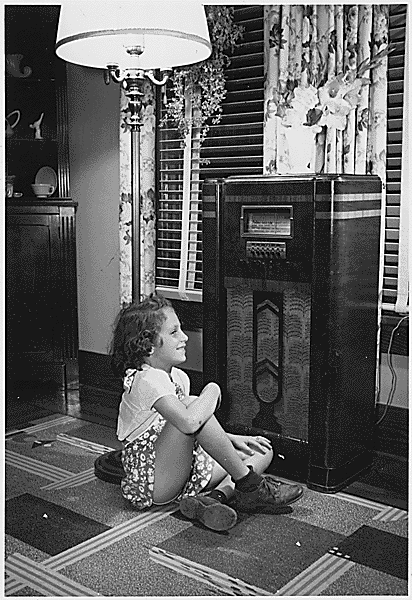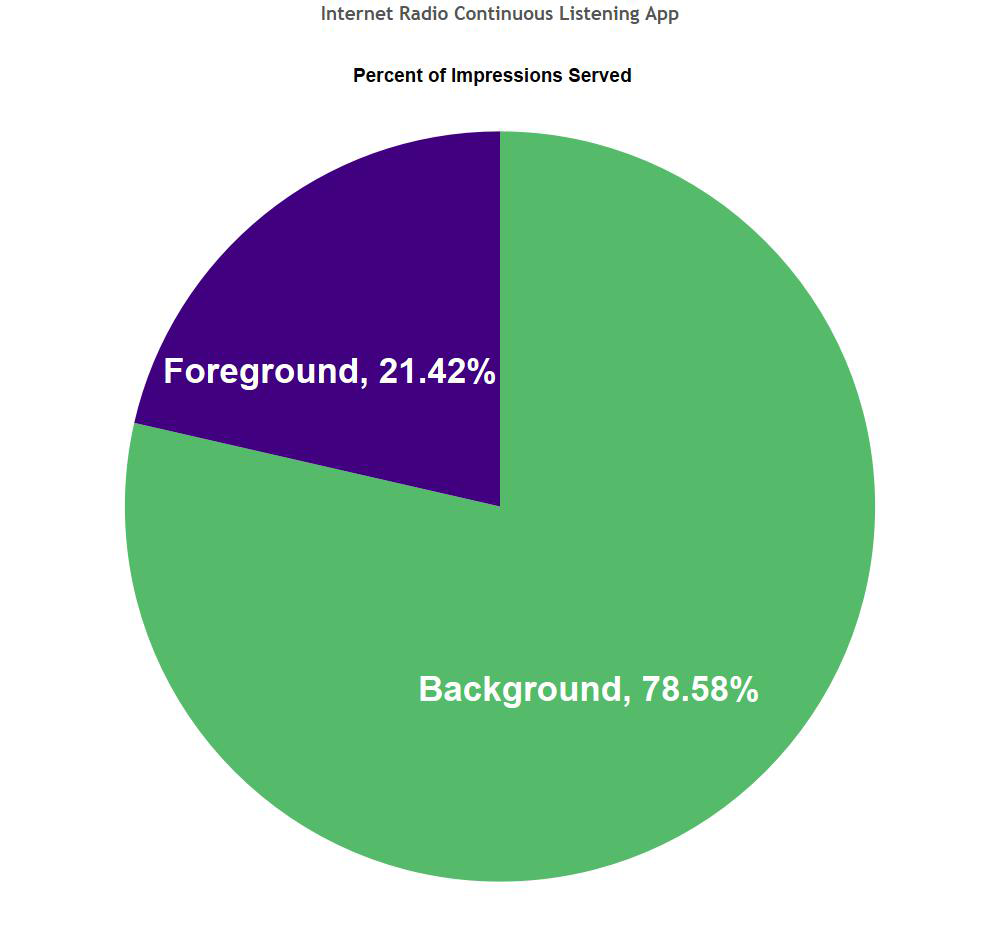 XAPPmedia’s Interactive Audio Ads are based on an observable fact: people don’t watch radio; they listen to it. Of course there is YouTube and video coupled with audio content can be a great creative tool. However, that’s not radio. Radio is that experience where your ears are focused and your eyes are free to do something else. Whether your eyes are closed in relaxation or actively navigating you down a city street, the eyes are not an essential part of the radio experience.
XAPPmedia’s Interactive Audio Ads are based on an observable fact: people don’t watch radio; they listen to it. Of course there is YouTube and video coupled with audio content can be a great creative tool. However, that’s not radio. Radio is that experience where your ears are focused and your eyes are free to do something else. Whether your eyes are closed in relaxation or actively navigating you down a city street, the eyes are not an essential part of the radio experience.
It is the aural experience that makes radio unique as a medium. In fact, the listening-only nature of radio gives it the power to be integrated into parts of our lives where other media cannot be consumed. Clearvoice Research recently published a consumer behavioral study concluding that over 50% of all audio content was consumed while people were unable to watch because they were ultramobile. Their hands and eyes were occupied in another task ranging from cleaning to exercising, driving to working. But that’s only scratching the surface.
79% of Audio Ads Served Cannot Be Seen on Mobile
When it comes to consuming audio content on mobile devices, the eyes free nature is even more extreme. XAPP data shows that 78.58% of all audio ads are served when the app is not visible. Common sense suggests you shouldn’t rely on banner ads for interaction on Internet radio if 4 out of 5 audio ads cannot be seen. You better focus on the audio portion of the ad.
 Some definitions might be beneficial here. In the mobile world, an app is considered to be in “foreground” when the screen is illuminated and that app is present on it. The app is considered to be in “background” when the screen is dark (normally to save power) or another app is active on the screen. If the app is in foreground, a banner ad is viewable and a consumer may click it to engage with an advertised offer. If the app is in background, there is neither opportunity to see the ad nor click.
Some definitions might be beneficial here. In the mobile world, an app is considered to be in “foreground” when the screen is illuminated and that app is present on it. The app is considered to be in “background” when the screen is dark (normally to save power) or another app is active on the screen. If the app is in foreground, a banner ad is viewable and a consumer may click it to engage with an advertised offer. If the app is in background, there is neither opportunity to see the ad nor click.
So the question for advertisers is whether Internet radio on mobile devices is really much different from ads served on terrestrial radio. Sure you have measurable impressions and potentially some targeting on Internet radio that terrestrial radio can only estimate, but both still look like one-way communication channels. That is why XAPP’s Interactive Audio Ads are creating so much interest. They can enable two-way interaction in an audio medium by allowing consumers to speak. Consumers may not have access to the screen, but the microphone can enable interaction through a voice click.
For example, after a XAPP Ad a consumer can say, “Call Now” to be connected automatically by phone and claim an advertised offer. Similarly, he or she could say, “Download App,” “Send Coupon,” “Watch Video,” or a variety of other action phrases that connect him or her to brand offers without the need to touch or even view the screen. Radio finally has a robust backchannel for listener engagement.
Voice Clicks Work in Foreground and Background
One more piece of data will help drive this point home. XAPP analyzed voice clicks and touch clicks when ads were served while the audio app was in background and foreground.

As you can see, voice clicks are consistent at 6.15% for ads served both in the foreground and background. This is not surprising. Responding by voice is simple and convenient whether you have access to a screen or not. By contrast, touch clicks fall from 1.46% to 0.01% when the app is in background. While a few incremental consumers engage with the visual creative content when it’s viewable, you lose all of that interaction when it is not.
Considered another way, for the 21.42% of the time that the app is in foreground, providing an interactive audio voice click capability increases the response rate by over 300%. When the app is in background, nearly all of your potential ad conversions are only available with a voice click.
Think of Listeners as Blindfolded
 Radio or audio content is simply different than other media in the way we interact with it. This may seem obvious, but digital platforms such as smartphones often start from a premise of visual interaction. Most of the time this approach is appropriate because the apps are based on active, visual engagement. Audio does not assume visual interaction and as a result requires a different user experience model. If you think of listeners as blindfolded, you are more likely to succeed in marketing to them effectively. To generate engagement or conversion with listeners, voice is a far better tool than touch.
Radio or audio content is simply different than other media in the way we interact with it. This may seem obvious, but digital platforms such as smartphones often start from a premise of visual interaction. Most of the time this approach is appropriate because the apps are based on active, visual engagement. Audio does not assume visual interaction and as a result requires a different user experience model. If you think of listeners as blindfolded, you are more likely to succeed in marketing to them effectively. To generate engagement or conversion with listeners, voice is a far better tool than touch.
What XAPP Ads do is give consumers the option to use their voice and that capability makes audio ads truly interactive for the first time. Advertisers on audio can now get customer conversions instantly that were elusive on terrestrial radio and even on today’s mobile listening apps. That fact makes audio publisher inventory more valuable to advertisers because they can tie a direct ROI to their ad flights. You heard it here first.
To learn more about how XAPP Ads work click here.
Related Posts
Unpacking the Data on Mobile Ad Effectiveness
Introducing the Voice Click, Hands-Free Conversion
Closing the Loop: why advertisers have been slow to shift from terrestrial radio to Internet audio
